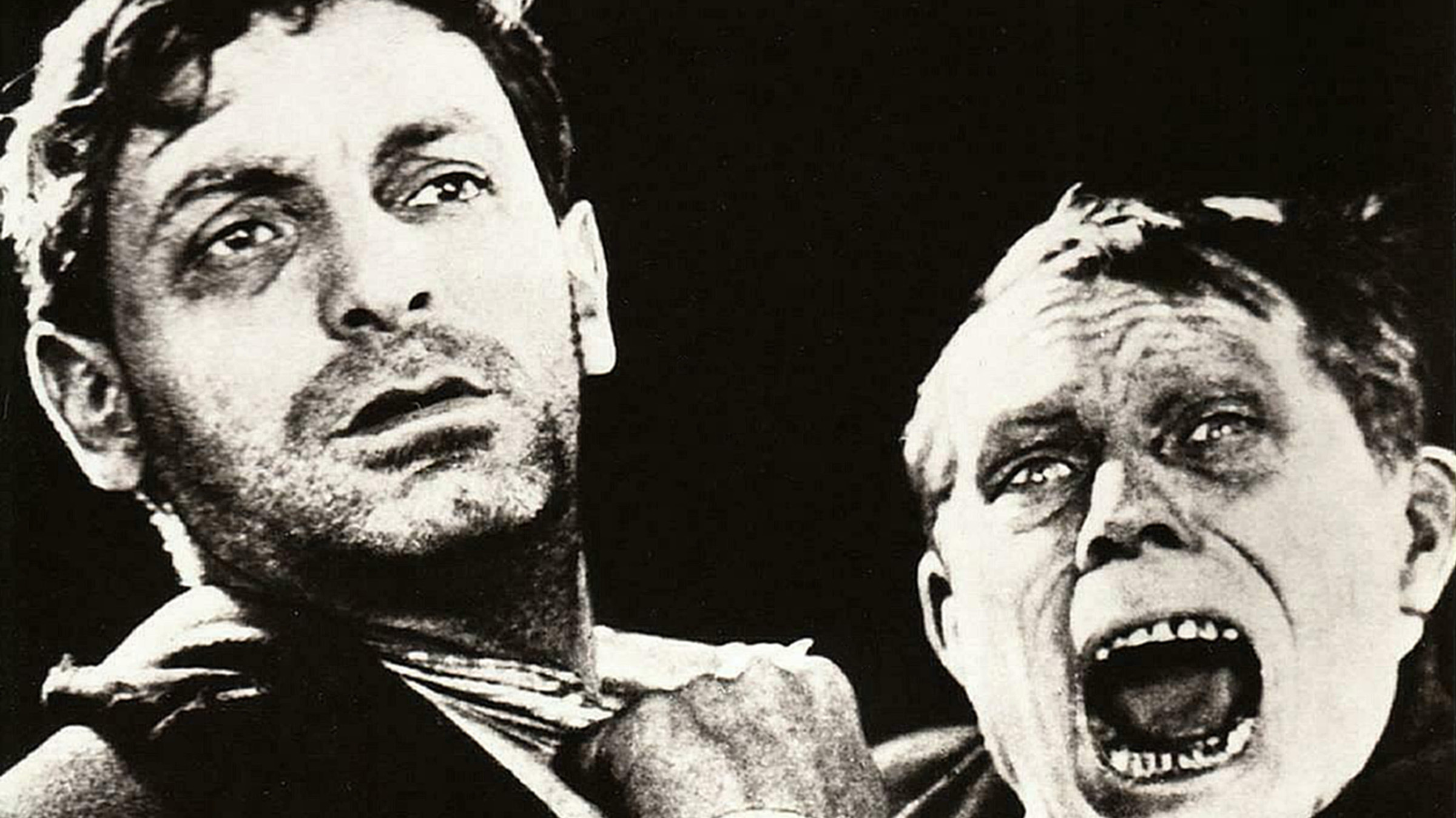The first film I ever happened to restore (because we needed to program it and it was found no complete and good print seemed to exist) was Fedor Ozep’s Zhivoj Trup (The Living Corpse), a still forgotten, or underestimated, film starring Vsevolod Pudovkin, shot in Berlin in 1928. While I was working on the film, a streak of luck helped me to find reasonably good elements at the Danish Film Institute, and brought the help of Staatliches Filmarchiv in East Berlin as a capable laboratory to the project. What’s more, Gillian Anderson’s helpful index to the holdings of the Library of Congress, Music for Silent Film had just appeared and she was kind enough to quickly have Werner Schmidt-Boelcke’s score copied and sent to us, so it could be prepared for the performance—all that an amazing sixty years after the film’s premiere. Frank Strobel, in those days still too young to be accepted as the orchestra’s conductor, meticulously analyzed and re-synchronized the score with the evolving print while I was editing the film back into its original order with the help of a negative cutter. Every day I was sending him lists with frame counts. We worked alongside with each other in different cities and had never even seen each other yet. We were so short of time that I never saw a print, nor heard a piece of the music until the dress rehearsal on the morning of the day the first performance was scheduled. Through the previous night we had worked hard to dismantle the first ten rows of seats in the theater in order to form an ersatz pit for the orchestra.
Seeing “my” film come alive through the sound of music once the projector had started was an incredibly rewarding, if not overwhelming experience, and while Frank was shouting “slower” or “faster” from the projection booth in order to keep conductor and orchestra in pace with the film, Ozep’s long takes and inexplicably slow-paced close-ups suddenly made sense and became loaded with meaning that had completely escaped me before.
Kevin Brownlow came to the premiere and apparently liked what we had done and was kind enough to recommended it to the Pordenone festival, where it showed the following year, giving me the chance to become internationally visible as the expert I certainly wasn’t at the time, and to become acquainted with the silent film crowd from around the world. He also related King Vidor’s statement about music being fifty percent of the experience when presenting a silent film.
Nothing could be more true, and since then it angers me that theaters and festivals snub the music we put on the silent films we restore. If at all available, we go back to the long forgotten original scores or ask capable composers to write new ones and put a lot of effort (and money) into producing good recordings, but they are hardly ever presented. People find it more effective to hire musicians to create live scores, but the circumstances in which they work hard to put something “under the screen,” so to speak, usually do not allow an overall result that is as rewarding as hearing the original Edmund Meisel score for, say, Berlin, the Symphony of a City, Battleship Potemkin, or Klaus Pringsheim’s music for Sylvester (only heard once in 1924 and now available again), or even the recreation of an orchestral score prepared by Karl-Ernst Sasse for Asphalt, written in 1995 in the spirit of the Jazz Age. Again and again, I am told live music is “more authentic” and I disagree entirely.
MARTIN KOERBER recently retired as head of Audiovisual Heritage for the Deutsche Kinemathek. The festival screening of Sylvester is accompanied by a live rendition of Klaus Pringsheim’s score adapted by composer Timothy Brock for ensemble. It will be conducted by Brock and performed by the San Francisco Silent Movie Orchestra.

